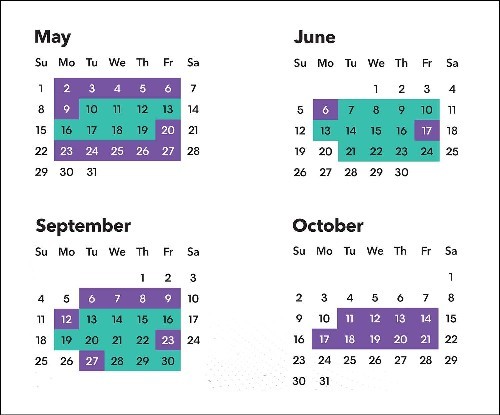ARTICLE
2022 Congressional Outlook: Key Dates, Legislative Priorities, and Midterms Preview
Halfway through the 2022 congressional calendar, lawmakers are working through a packed agenda and kicking off the appropriations process while the nation prepares for November’s midterm elections.
Knowing what’s happened, what’s changing, and what’s to come on Capitol Hill is essential for success in the months ahead. You can count on Bloomberg Government to keep you informed and help you make sense of it all.
Essential Intel in One Place
We can help you strategize effectively by providing the news, analysis, and tools you need – state and federal – within a single platform. Request a demo to learn about our custom news alerts, legislative and regulatory tracking, congressional and state legislator directories, and more.
What are key dates on the 2022 congressional calendar?
June 30 – Trade Adjustment Assistance program for U.S. workers fully phases out
August 31 – Student loan interest and payment pause issued by administration ends
September 30 – End of fiscal 2022; several major programs expire, including:
- Food and Drug Administration fees for prescription drugs and medical products
- Mental health and other programs under the 21st Century Cures Act
- Key provisions of the National Flood Insurance Program
- E-verify and other immigration authorities
November 8 – Midterm congressional elections
December 13 – Federal Medicaid increase for territories expires
December 31 – Expiration of the following:
- Tax credits for biodiesel and renewable diesel
- Temporary ban on fentanyl-like substances
- NASA leasing authority expires
Download: Access our 2022 combined congressional calendar to easily track when the House and Senate are in session.

[Bloomberg Government clients can also search and track events on a federal and state-by-state level with Bloomberg Government’s comprehensive calendar tool. Filter by agency, topic, committee, and more.]
Additional Covid-19 relief stalls amid disagreement over immigration policies.
President Biden requested $22.5 billion for coronavirus resources, but a $10 billion bipartisan Senate agreement focused on domestic needs was stymied when the administration ended Title 42, the pandemic policy that allowed officials to quickly expel migrants and asylum seekers at the border.
Republicans could push for an amendment to the Covid bill that would block reinstate Title 42, or alternatively may strike a deal with the Biden administration that would lead to a change in the policy.
Meanwhile, the House passed a $55 billion bill (H.R. 3807) aimed at providing relief to restaurants and small businesses.
Hub: 2022 Midterm Congressional Elections
Your go-to resource for staying current on the 2022 midterm elections and how they’ll impact the congressional balance of power, government affairs, and policy making.
Legislators push to bolster U.S. competition with China.
One legislative priority that has bipartisan support: Increasing competitiveness with, and reducing reliance on, China. In June 2021, the Senate passed the $250 billion “U.S. Innovation and Competition Act” (S. 1260).
It includes $52 billion for semiconductor research and development and would establish a new directorate within the National Science Foundation (NSF) to strengthen U.S. leadership in critical technologies. It would also require sanctions on China “malign influence” activities.
In February 2022, the House passed the “America COMPETES Act” (H.R. 4521), which aims to accomplish similar goals, such as boost semiconductor research funding by more than $50 billion and reauthorize NSF programs.
The bills differ more notably in other provisions, for example the House bill authorizes $8 billion for contributions to the Green Climate Fund, while the Senate bill has no specific climate-related funding. Congressional leaders have initiated negotiations over the final shape of the legislation.
2022 midterm predictions: The historical precedent for midterm elections.
The process of passing legislation is even more high stakes than usual, thanks to the upcoming midterm elections.
A president’s popularity is often diminished by the midterm elections. Presidents Clinton, Obama, and Trump lost majorities in at least one chamber in their first midterms. President George W. Bush was a recent exception – Republicans gained the Senate in his first midterm.
In the House, all 435 seats are up for election. Republicans would need to net five seats to take control. These elections will also be impacted by redistricting based on the 2020 census.
Five special elections will take place before the November election to fill the following seats that are currently vacant:
On the Senate side, 35 seats are up for election this year – 14 Democrats and 21 Republicans. There are five tossups, according to Cook Political Report, and only a single net gain would give Republicans control.